Birds have fascinated humans for centuries with their remarkable abilities and intelligence. While parrots often steal the spotlight for their impressive cognitive skills and vocal mimicry, many non-parrot species demonstrate extraordinary intelligence that deserves recognition. From problem-solving corvids to tool-using songbirds, the avian world contains a remarkable diversity of brilliant minds outside the parrot family. This exploration into the smartest non-parrot birds reveals nature’s remarkable capacity for developing intelligence across different evolutionary paths.
Ravens: The Problem-Solving Masterminds
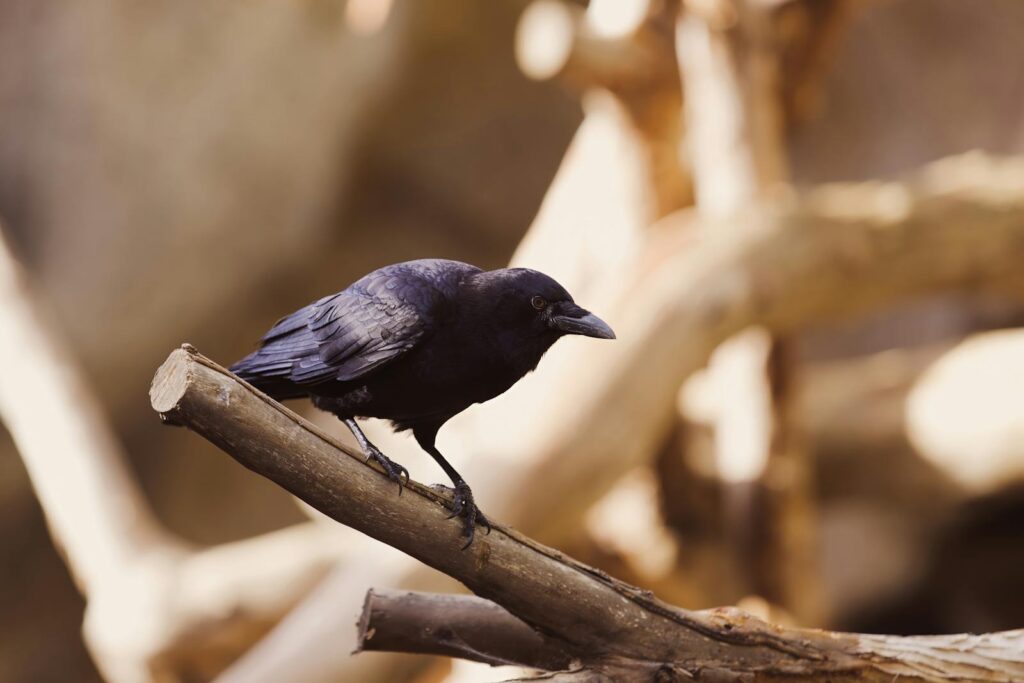
Ravens (Corvus corax) stand at the pinnacle of avian intelligence, demonstrating cognitive abilities comparable to great apes and dolphins. These remarkable birds have demonstrated the ability to plan for the future—a trait previously thought to exist only in humans and other primates. In laboratory settings, ravens have solved complex multi-step puzzles, used tools, and even engaged in deceptive behaviors to protect their food caches from competitors. Perhaps most impressively, ravens possess a sophisticated understanding of cause and effect, allowing them to figure out how to pull strings, operate complex mechanisms, and even drop stones into water to raise the level and access floating food. Their intelligence extends to social dynamics, where they form complex relationships and appear to engage in political maneuvering within their social groups.
Crows: The Versatile Urban Intellects
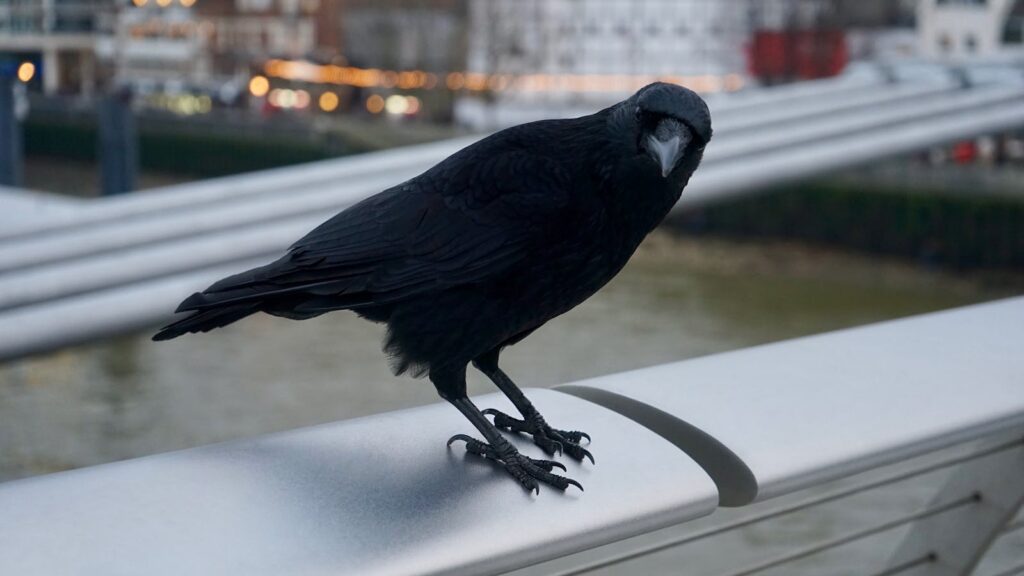
Crows, particularly New Caledonian crows (Corvus moneduloides), display some of the most sophisticated tool use in the animal kingdom outside of primates. These remarkable birds craft tools from plant materials with specific shapes for specific tasks—creating hooks to extract insects from tree crevices and even modifying their tools when they’re not effective enough. In urban environments, crows have been observed dropping nuts onto crosswalks for cars to crack open, then waiting for the traffic light to change before safely retrieving their meal. Some crow species can recognize individual human faces for years, remembering those who have threatened them and passing this knowledge to their offspring and other crows. Their problem-solving abilities extend to understanding water displacement, sequential tool use, and even basic principles of physics, suggesting a level of causal understanding rarely seen in non-human animals.
Magpies: The Self-Aware Innovators

Magpies (Pica pica) belong to the elite club of animals that can recognize themselves in a mirror—a test of self-awareness that even most primates fail. This cognitive feat places them in the company of great apes, elephants, dolphins, and some other select species, demonstrating exceptional self-awareness. Beyond this remarkable ability, magpies excel at problem-solving tasks and display impressive spatial memory capabilities that allow them to remember hundreds of food cache locations. Their intelligence extends to social learning, where they can acquire new skills by observing others, and adaptive behavior in human environments, where they’ve learned to exploit human activities for food opportunities. Magpies also demonstrate advanced planning capabilities and the ability to assess risk against reward when making decisions about resource acquisition.
Jays: The Planners and Strategists
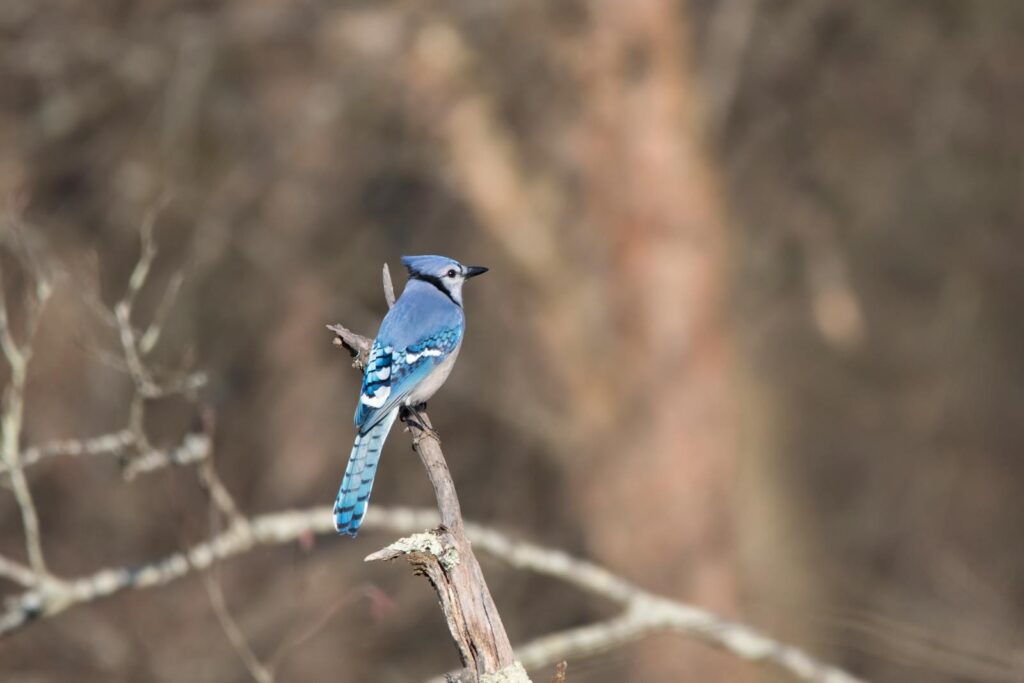
Jays, particularly scrub jays (Aphelocoma californica) and Eurasian jays (Garrulus glandarius), demonstrate remarkable foresight and planning abilities previously thought unique to humans. These birds cache food for future use, but importantly, they consider the specific conditions they might face later—storing different types of food based on projected future needs. In laboratory experiments, jays have shown the ability to plan for specific future events, caching particular food items in anticipation of conditions where those foods would be unavailable. Scrub jays also show evidence of “episodic-like memory,” remembering the “what, where, and when” of specific events, such as which foods they cached, where they hid them, and how long ago. This sophisticated cognitive ability allows them to retrieve perishable foods before they spoil and manage their resources with remarkable efficiency.
African Grey Hornbills: The Unexpected Intellects
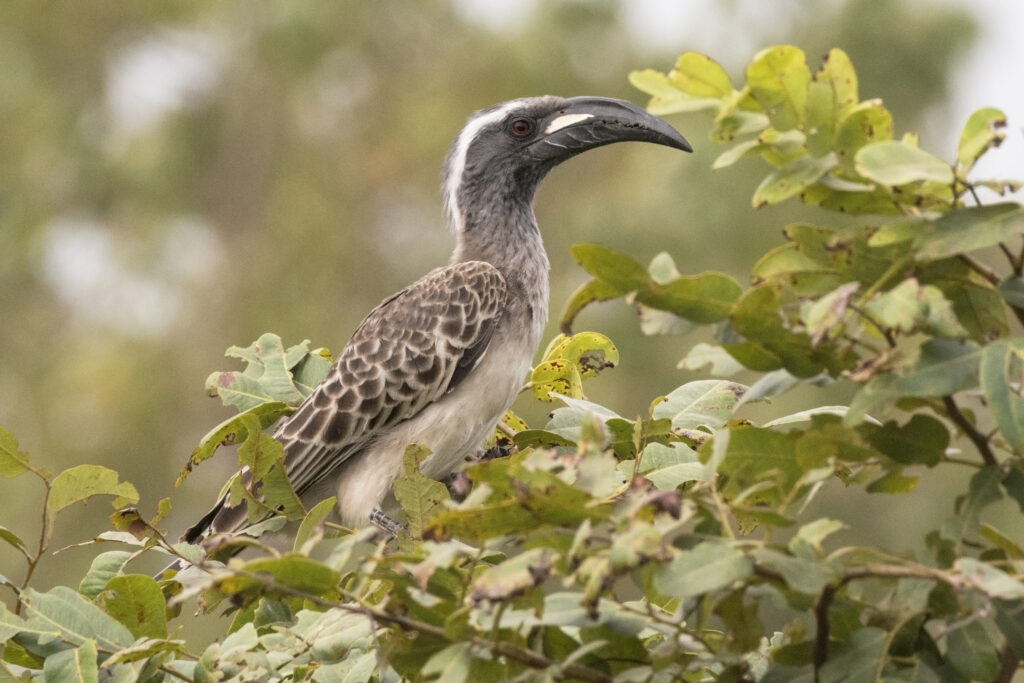
African Grey Hornbills (Lophoceros nasutus) demonstrate surprising intelligence despite receiving less scientific attention than corvids. These birds exhibit sophisticated cooperative breeding behaviors, with males sealing females into nest cavities using mud, leaving only a small slit through which they provide food during the incubation period. This complex behavior requires planning, coordination, and mutual trust between partners. Hornbills have demonstrated impressive problem-solving abilities when obtaining food, including manipulating objects to access hidden rewards. They also show remarkable spatial memory, navigating across large territories and remembering the locations of specific fruiting trees throughout different seasons. Their social intelligence includes recognizing individual birds within their community and maintaining complex social bonds that facilitate cooperation.
Starlings: The Vocal Learning Virtuosos
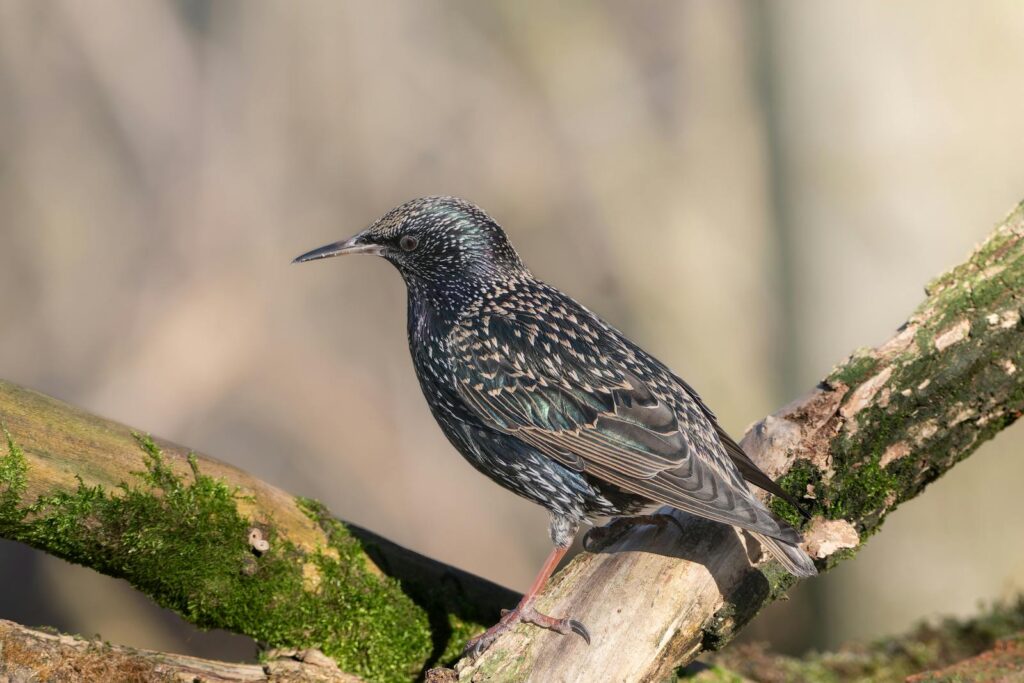
European starlings (Sturnus vulgaris) possess exceptional vocal learning abilities that reflect sophisticated cognitive processing. These birds can recognize complex acoustic patterns and grammatical structures in ways that parallel human language learning capacities. In laboratory settings, starlings have demonstrated the ability to distinguish between patterns that follow specific grammar rules and those that don’t—a cognitive feat previously thought exclusive to humans. Beyond their vocal capabilities, starlings show impressive problem-solving skills, adapting rapidly to novel environmental challenges and developing innovative strategies to access food resources. Their social intelligence enables large flocks to coordinate breathtaking murmurations, with thousands of birds moving in synchronized patterns without collisions—a feat requiring rapid processing of spatial information and anticipation of others’ movements.
Kea: The Playful Mountain Intellects
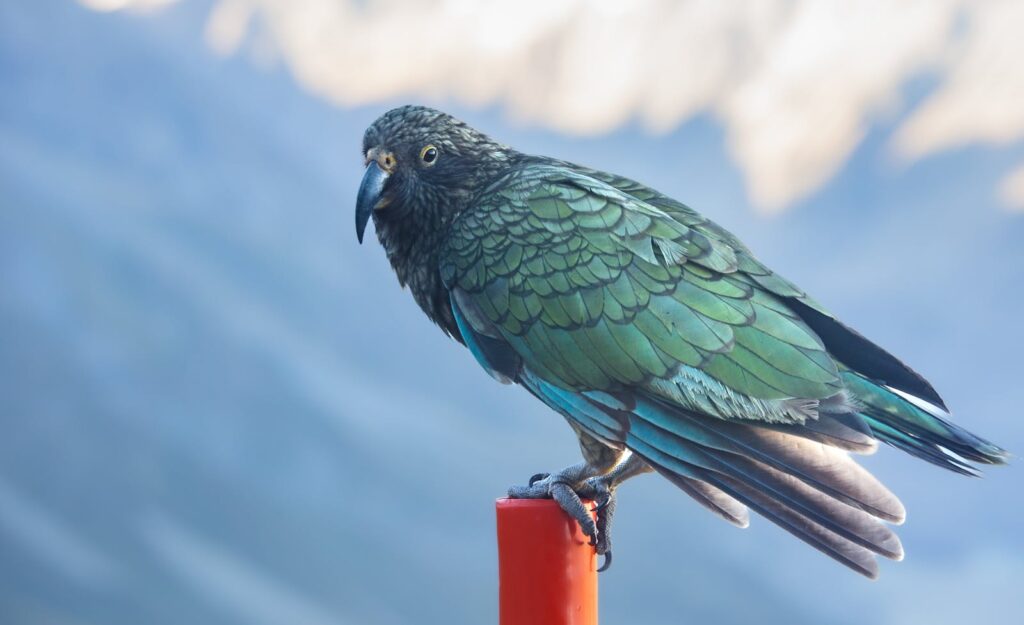
The kea (Nestor notabilis), a parrot-like mountain bird native to New Zealand, demonstrates extraordinary intelligence wrapped in a playful, curious nature. Despite not being a true parrot (being in the Nestoridae family), these birds show problem-solving abilities that rival and sometimes exceed those of many parrot species. Keas have been observed using multiple tools in sequence to solve complex problems, displaying an understanding of cause and effect that suggests advanced causal reasoning. Their exploratory behavior is legendary among ornithologists, with keas systematically investigating novel objects and showing persistent curiosity that leads to innovative solutions. Perhaps most impressively, keas exhibit collaborative problem-solving, working together to achieve goals that would be impossible for a single bird—a rare trait in the avian world that suggests advanced social cognition.
Nutcrackers: The Memory Champions
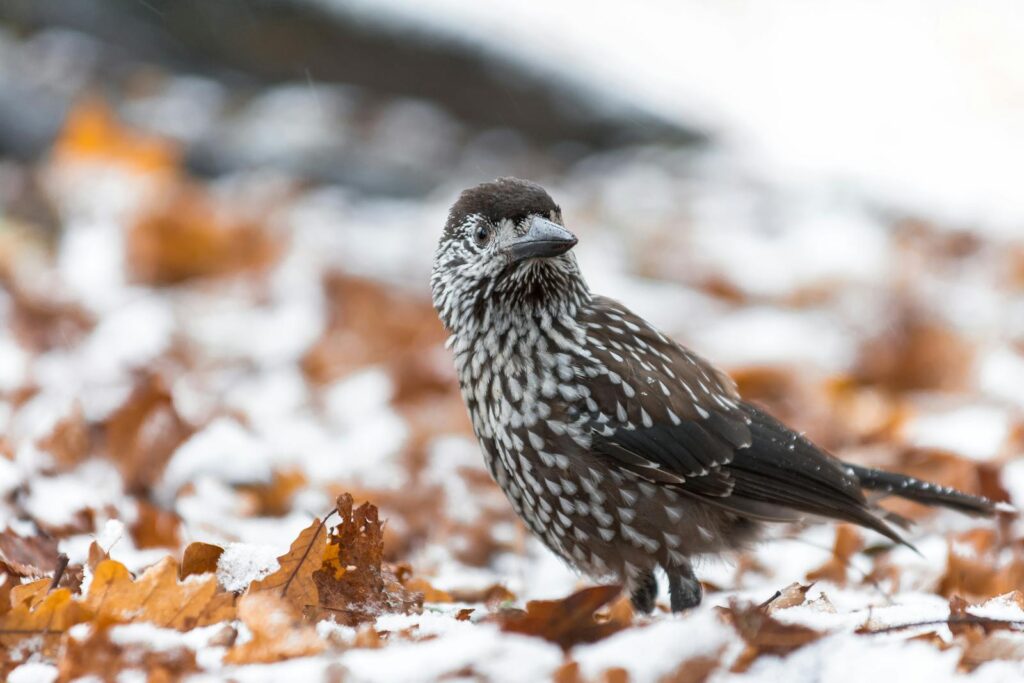
Clark’s nutcrackers (Nucifraga columbiana) possess perhaps the most impressive spatial memory in the avian world, a cognitive specialization that allows them to thrive in harsh mountain environments. These remarkable birds can cache up to 100,000 pine seeds in a single season, distributing them across thousands of hiding spots throughout their territory. What makes this feat truly extraordinary is their ability to remember the locations of these caches for up to nine months, recovering them throughout the winter when food is scarce. Research suggests nutcrackers use complex spatial mapping abilities, remembering landmarks and geometric relationships between points in the landscape. This specialized memory allows them to recover cached seeds with astonishing accuracy, even when the landscape is transformed by snow, demonstrating cognitive adaptations perfectly suited to their ecological niche.
Egyptian Vultures: The Tool-Using Scavengers
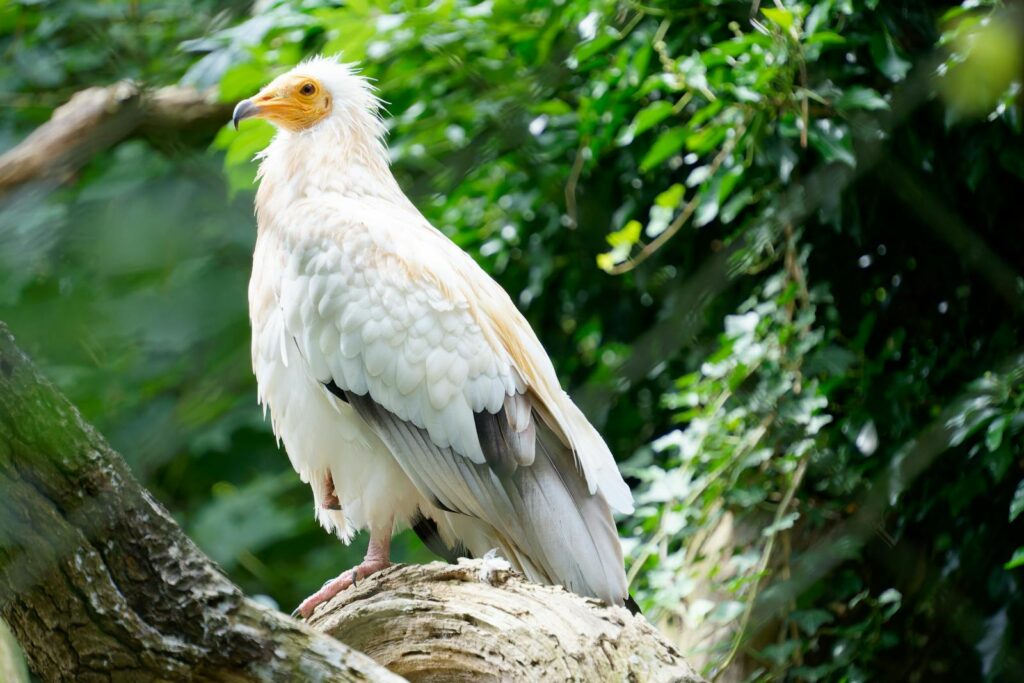
Egyptian vultures (Neophron percnopterus) demonstrate a sophisticated form of tool use that illustrates advanced problem-solving capabilities. These vultures are famous for their ability to use stones as tools to crack open ostrich eggs—a behavior that requires understanding of physical causality and demonstrates purposeful tool selection. They deliberately choose stones of appropriate size and shape for the task, showing an understanding of the physical properties needed for effective tools. Some populations of Egyptian vultures have been observed collecting wool and plant material to dab into rotting carcasses, creating absorbent “sponges” they use to collect blood—a nutritious liquid they would otherwise be unable to consume. This innovative tool use represents a high level of adaptive intelligence, particularly impressive in a bird not closely related to the tool-using corvids.
Woodpecker Finches: The Natural Toolmakers
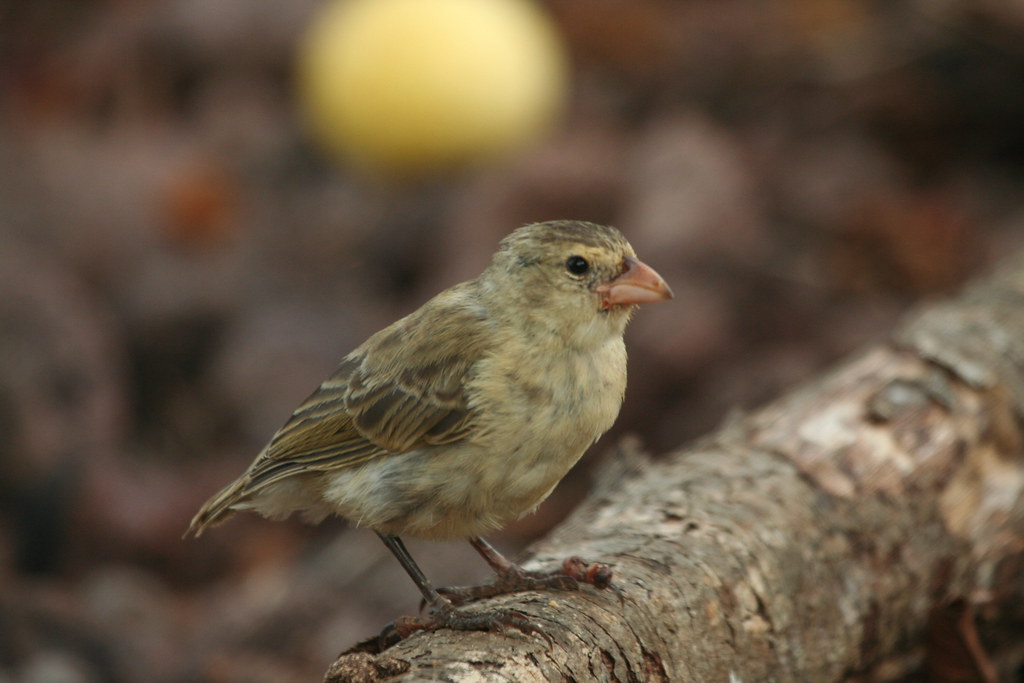
The woodpecker finch (Camarhynchus pallidus) of the Galápagos Islands demonstrates one of the most impressive examples of tool use in the avian world outside of corvids. These remarkable birds use cactus spines or twigs as tools to extract insects from tree crevices—a behavior that functions as an extension of their bills. What makes this ability particularly impressive is that it appears to be partially innate rather than entirely learned, suggesting evolutionary selection for cognitive tool-using abilities. Woodpecker finches modify their tools by trimming them to appropriate lengths and shapes for specific tasks, showing an understanding of tool functionality. They can spend nearly half their feeding time using tools, extracting up to 50% more food than would be possible without tools—a cognitive adaptation that has become fundamental to their survival strategy.
Great-Tailed Grackles: The Adaptive Urban Problem-Solvers
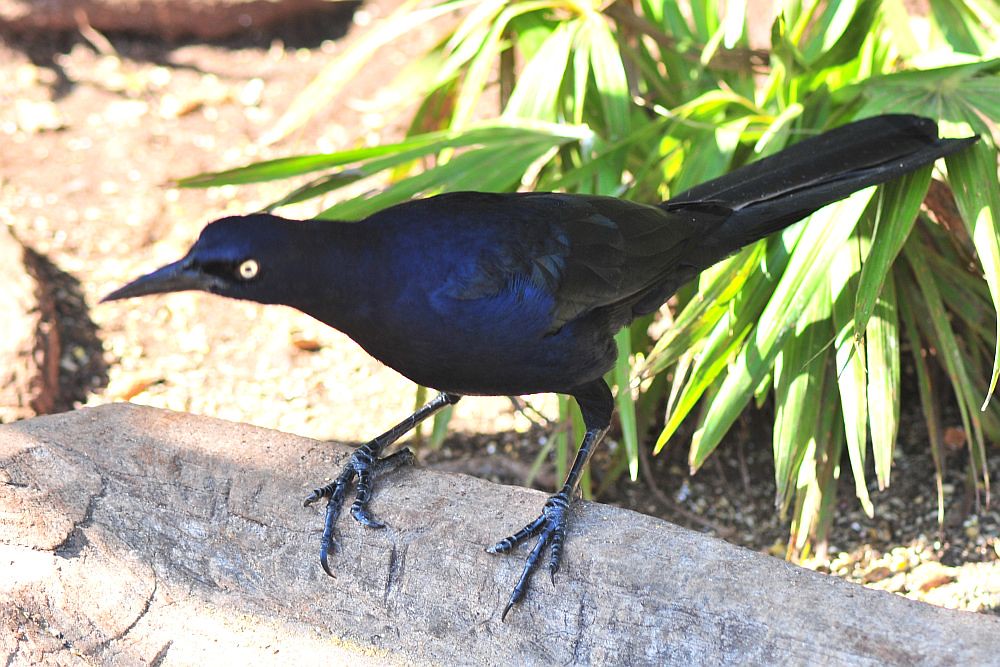
Great-tailed grackles (Quiscalus mexicanus) demonstrate remarkable behavioral flexibility and problem-solving abilities that have allowed them to thrive in rapidly changing urban environments. These birds show innovative foraging techniques, including following lawn mowers to catch disturbed insects and using cars to crack hard foods like nuts and shellfish. Research has demonstrated their exceptional cognitive flexibility—they can quickly adapt to changing conditions and revise their strategies when confronted with new problems or when previous solutions no longer work. Even more impressively, grackles show evidence of causal reasoning, understanding connections between actions and outcomes in ways that allow them to solve novel problems. Their success in urban environments stems partly from their ability to learn from observation, rapidly adopting new behaviors that prove successful for other individuals.
White-Winged Choughs: The Cooperative Intellects
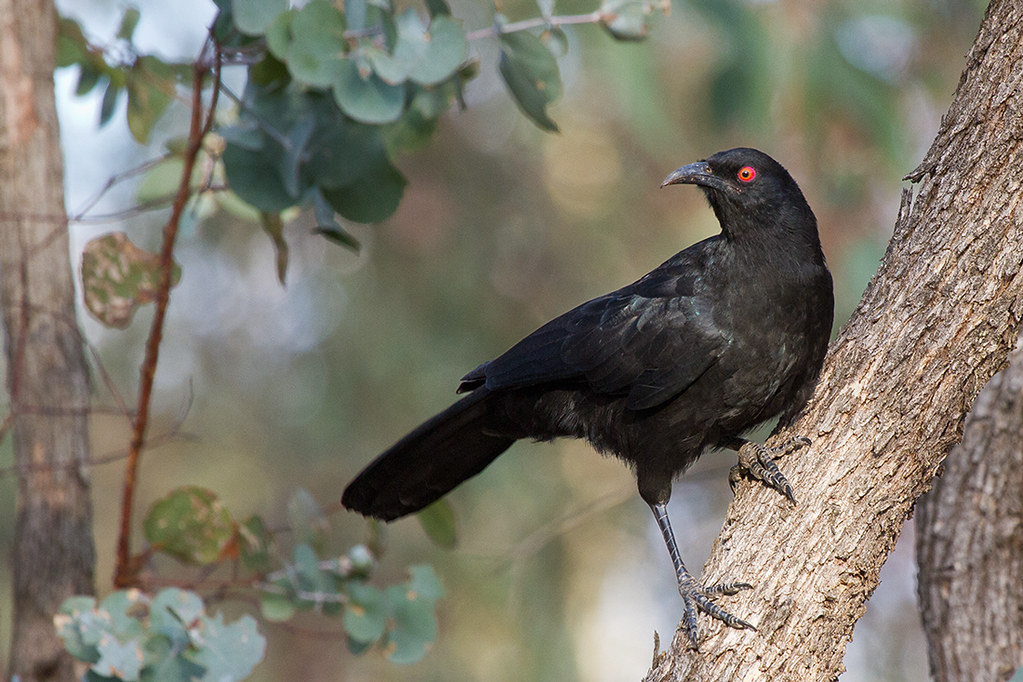
White-winged choughs (Corcorax melanorhamphos) demonstrate complex social intelligence through their highly cooperative breeding system, which requires sophisticated coordination among group members. These Australian birds live in family groups where offspring from previous years help raise new chicks—a system requiring recognition of relationships, understanding of roles, and coordination of efforts. Young choughs have been observed engaging in deceptive behaviors, pretending to feed chicks while eating the food themselves—a form of tactical deception that suggests an understanding of others’ perceptions and intentions. Their cooperative hunting techniques involve coordinated group movements to flush out prey, demonstrating an ability to work together toward common goals. Perhaps most impressively, choughs engage in teaching behaviors, with adults demonstrating specific foraging techniques to juveniles in a manner that meets the scientific criteria for true teaching—a rare cognitive ability in the animal kingdom.
Conclusion
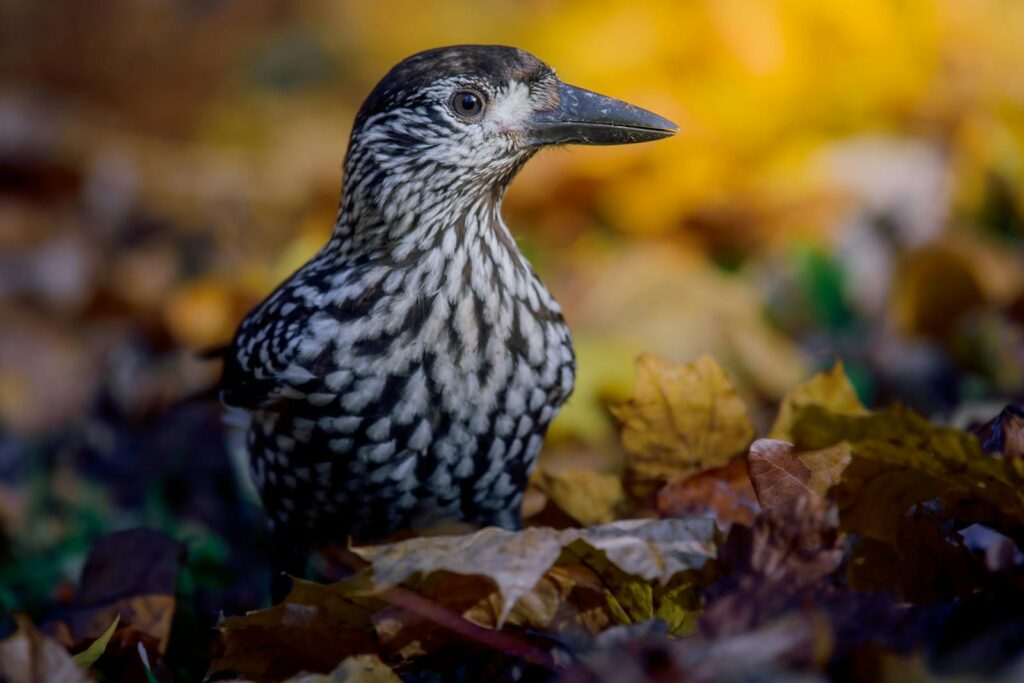
The avian world reveals that intelligence has evolved along multiple paths and takes diverse forms beyond the familiar parrot family. From the remarkable tool use of crows and woodpecker finches to the self-awareness of magpies and the extraordinary memory capabilities of nutcrackers, non-parrot birds demonstrate cognitive abilities that challenge our understanding of animal intelligence. These species show that complex cognition can evolve in response to different ecological challenges across diverse evolutionary lineages. By broadening our appreciation beyond parrots, we gain a more complete understanding of the rich landscape of avian intelligence and the fascinating ways in which birds have developed cognitive solutions to life’s challenges.
